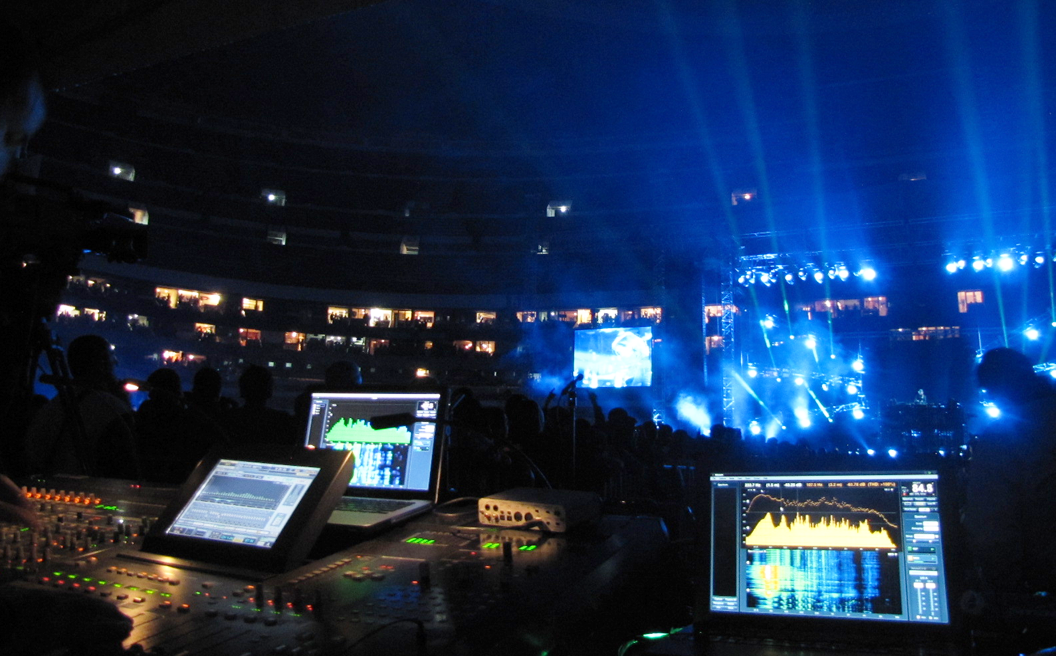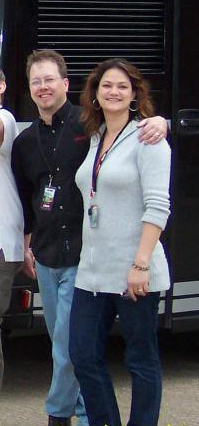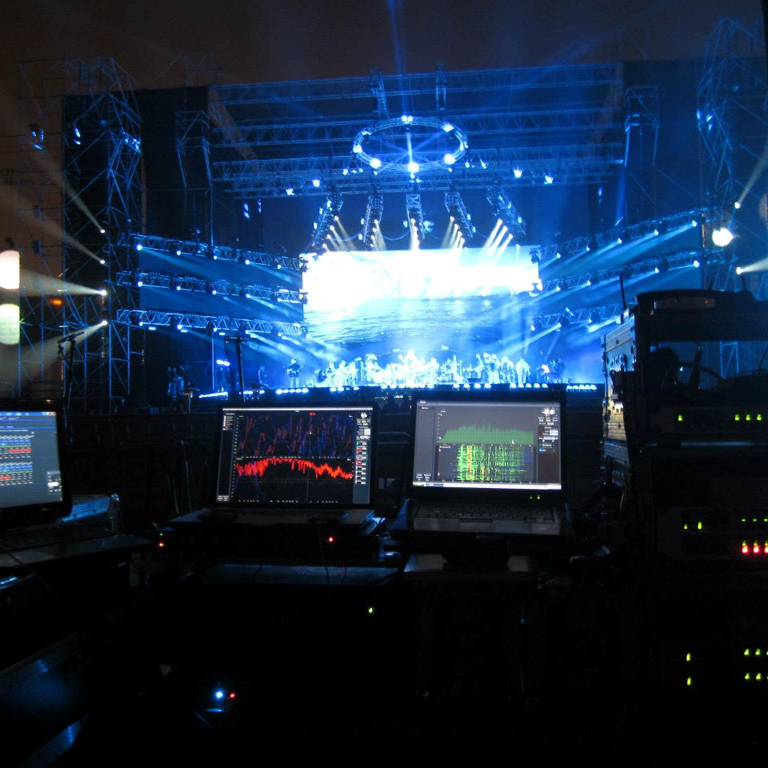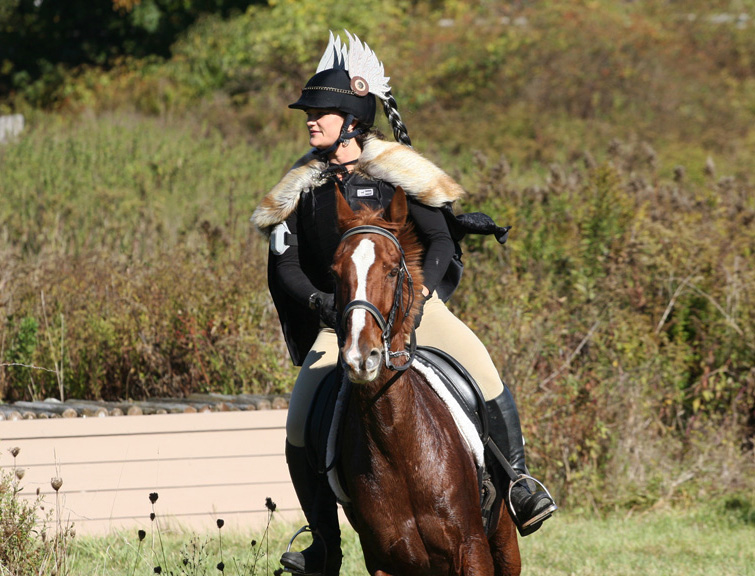
Karen Anderson- Smaart Woman
Rational Acoustics is the owner and developer for Smaart and is dedicated to developing the next generation of acoustic measurement and optimization software. The company was founded by Karen Anderson and her husband, Jamie in 2008.
Karen Anderson has spent 20 years working in professional audio for leading audio manufacturers EAW and Meyer Sound before starting Rational Acoustics, where she is COO and Director of Marketing. “After graduating from UC Berkley in 1991, I worked for the California Shakespeare Festival for a summer as a lighting technician, but pretty quickly realized that I was not cut out for the instability of the freelance theater lifestyle. So I took a job as the receptionist at Meyer Sound in Berkeley and immediately became enchanted with both the technology and the overall vibe of the professional audio industry.” Karen worked in various positions at Meyer until she ultimately landed in marketing. It is also where she met her husband Jamie who was the technical support manager and SIM instructor.
Necessity creates a job
In the early 90s, Meyer Sound was a much smaller company than it is today. At that time, it lacked a formal marketing department, so Karen took it upon herself to fill that need. She started placing ads, writing marketing materials, planning tradeshows, etc. Eventually, she returned to college through a UC Berkley extension and received an Associates in Marketing, “just to make it official”. Karen says, “Marketing appeals to me because it is a mix of analytical and & creative thinking. I can indulge my OCD side with spreadsheets and market research and planning & forecasting and my creative side by working with writers and designers to come up with fun & creative marketing campaigns. Marketing gives a unique insight into the industry because it doesn’t concern itself with just products and technologies, but also with trying to understand the pulse of the industry and the people in it. It doesn’t matter if you have the most technologically brilliant product on the planet if you cannot reach your customer base and speak to them in a way that they understand & appreciate.”
In 1999, Karen and Jamie left Meyer for the Northeast following career opportunities and more affordable cost of living. Both took jobs at EAW – Karen as Marketing Manager and Jamie as Smaart Production Manager. The two later formed Rational Acoustics with fellow EAW colleagues Calvert Dayton, and Adam Black in order to dedicate themselves to the development of the Smaart software platform.
Can you tell us about what led to the development of Smaart?
“20 years ago, system measurement and optimization was seen as something that was “nice to have” but choices of sound system measurement tools were limited to some moderately priced RTA’s and a limited number of extremely expensive (hardware-based) dual-channel acoustic analyzers – most of which developed for industries and purposes outside of professional audio. This put those tools outside of the price range and technical expertise of most day-to-day audio professionals. But in the mid-90’s the development of the personal laptop computer, with processors strong enough to run the mathematical algorithms required, allowed for the possibility of a software-based analyzer. And thus, in 1995, Smaart was born. Since then Smaart has been in constant development both to keep up with and take advantage of, the ever changing and growing landscape of both the PC and professional audio industries. Ten years ago it was a 2-channel, PC-only platform and today it’s a multi-channel, dual-platform program with not only live measurement capabilities, but an entire set of acoustic & intelligibility functionality.”
How did the idea for Rational Acoustics come about?
“Back in 2000, EAW was bought by Mackie Designs, which in 2003 became Loud Technologies and was then bought by Sun Capital Partners, a private equity firm. Between 2003 and 2008 there was a tremendous amount of changes within Loud Technologies and within EAW. We both felt that our roles within the organization had strayed very far from what we wanted them to be and that Smaart was a great product that was being overlooked and under-served within such a large organization. We believed (and continue to believe) that for Smaart to grow as a product and for the Smaart user base to be best served, it needed to have a small team dedicated solely to its development & support. So in 2008 Jamie and I left and started Rational Acoustics, along with two other EAW guys Calvert Dayton and Adam Black. Since then we have been solely focused on developing, growing & supporting the Smaart platform. In 2010, we released Smaart v.7, which was the first Rational Acoustics developed version of Smaart. And we have since created a simplified 2-channel version of Smaart v.7, called Smaart v.7 Di, as well as some Rational Acoustics branded accessory hardware pieces. We are now a company of 7 full –time people and have a network of dealers and distributors selling & supporting Smaart in over 25 countries as well as a team of audio educators teaching Smaart classes all across the planet in multiple languages. “
How did you choose the name of the company?
“The name Rational Acoustics was not chosen lightly. It was very important to us to create the kind of company that we would want to work for as employees and do business with if we were customers- One with sane and “rational” policies and expectations. We hire the best people we can find, pay them well, give them a fun & supportive work environment and the responsibility & autonomy to succeed in their jobs. Being small and privately owned allows us to be nimble and flexible in everything we do, from product development to sales, to employee policies, to marketing. We hate layers of management and loads of paperwork and pointless corporate policies. Our motto is “Show up. Do your job. Don’t be a dick.” After that, everything else is simple.”
Women in high positions in audio and sound companies are rare, and often over shadowed and or dismissed as handling HR, hiring, or marketing. These are valuable roles and doing marketing for the company requires more than a basic understanding of the product or products and more than a basic understanding of audio and the industry. Karen has found this to be true and has also faced stereotypes and sexism. “Over the past 20 years I have had my fair share of folks dismiss me as tradeshow booth babe. I’ve been called “little darlin’” more than once (which is ironic as I am neither little, nor a darlin’). And it’s pretty common for someone on the phone or at a tradeshow to ask me to find “someone technical” for them to talk to. When I was younger this kind of thing bothered me but now it mostly just amuses me. And to be fair, this was much more common earlier in my career. Today, I think most men in the industry are very supportive and accepting of the greater prevalence of higher-level, technically savvy women colleagues. Even though women may only make up about 5% of the pro audio industry today, ten years ago it was probably only about 2 or 3%. So the numbers are trending in the right direction (although maybe not as fast as some would like). And as those numbers continue to grow, I would hope that the stereotypes & sexism continue to diminish.”
What are three important lessons you’ve learned over your career?:
1- Be Nice to Everyone: I know it sounds obvious, but strangely it’s not (for some). I am a firm believer in the whole “you attract more flies with honey than with vinegar” thing. Not only is it the right thing to do on a moral and philosophical level, but the professional audio community is way too small and interconnected to go around making enemies.
2- Measure Twice, Cut Once: Slow down and take five extra minutes to do something right the first time. Every time I have cut corners to get something done quickly or cheaply, I have paid for it down the road.
3 – Never Stop Learning: When we started Rational Acoustics, my entire career had been spent doing marketing and then suddenly I had to learn a whole slew of new skills like accounting & human resources & business admin. It was daunting but incredibly satisfying. It’s the same thing with audio, the technologies are ever changing, and if you think you know it all & stop learning, you will quickly get left behind.
Karen has some advice for women pursuing a career in the professional audio industry: “To be successful as a woman in this industry requires confidence, a thick skin, a good sense of humor and to be really, really good at what you do. Unfortunately, because of the scarcity of women in high-level positions in professional audio a greater scrutiny is sometimes placed on those who are. That said, I think that professional audio is an industry in which respect is given based on results regardless of gender. Many of the male friends I have made in this industry are the most wonderful, respectful, supportive people who couldn’t care less what sex I am as long as we get the job done. Women who expect special treatment or demand respect based on their gender won’t get very far. Women who quietly kick ass at their job and are passionate about what they do, will.”
Outside of Rational Acoustics, Karen enjoys spending time with her husband and children and also riding her horse. “I have a Tennessee Walking Horse, named “Fame,” who I ride whenever I get the chance and who I compete with at various horse events during the spring and fall. Mostly in cross country jumping. My 14-year-old daughter rides as well, and we ride together, which is a really wonderful way to spend some mother-daughter time. Riding is a great form of exercise and, for me, provides perfect stress relief. The freedom of flying through the woods in partnership with a 1,000 pound animal with a mind of its own is a joy that is hard to explain. “
When asked how she finds balance in her life Karen replies, “I wish I could say I do!! Because Jamie and I are married and own Rational together, it’s sometimes really hard to separate work from home. Inevitably, work talk creeps into our nights & weekends. And, having been in the industry for so long, most of our best friends are audio folks and any time we are in a theater or concert or even a restaurant or airport ….we are invariably checking out the audio systems. It’s a sickness!! 🙂 Luckily our kids are always there to give us a reality check and help keep everything in perspective. “
What do you see as the future of system measurement and software?
As I mentioned… 20 years ago system measurement was a “nice to have”. Today, it’s a “must-have”. Almost every live tour has someone trained in Smaart or SysTune or SIM and time is set aside during load-in specifically for system measurement, tuning & optimization. Measurement software is now routinely spec’d into permanent audio installations, and there is a growing segment of the audio industry who make their living measuring & tuning systems on a freelance basis. Even the smaller system providers & “weekend warrior” sound guys are starting to carry measurement rigs. This is both a blessing and a curse. While it’s great that the overall technical baseline of the industry is being raised, folks can definitely get themselves in trouble by having really powerful measurement tools and not understanding how to make intelligent choices based on the data. So for us, usability is key. The challenge is to create tools to help the less experienced users utilize the full power of Smaart while continuing to develop the advanced features that our super users demand. Interoperability will also be important in the future. As networked audio systems become increasingly prevalent, I think you will start to see measurement capability built into, or accessible by more and more products. For example, Smaart v.7 currently works with both Lake Controller v.6 and Apex Intelli-ware to allow measurement traces from Smaart to be viewed and controlled directly within each. And, Smaart RTA and Spectrograph functionality are currently embedded into the PreSonus Virtual StudioLive software for StudioLive mixers.
There will probably come a day when it will be unthinkable to have a professional audio system without a measurement rig somewhere in the mix. But as we stress to our users all the time, no matter how slick, software like Smaart is just a tool. It can help tremendously but cannot, and should not, replace the human element. Nothing can replace experience, the right gear and a great set of ears for a great sounding system.



